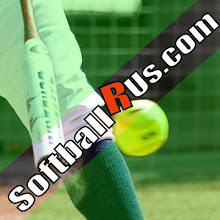However, focusing in on just a handful of talented individuals sends a clear message to the rest of the team. It says that you care most about the win and the rest of them are largely immaterial to your plans.
By Stacie Mahoe
These kids end up arriving at practice everyday feeling like practice dummies set up just to support the all-stars of the team. Feeling like practice was not made for them - they just can’t keep up.
Make practice easier on you and use a “cookie cutter” approach to each player. Or, do what’s best for each person on your team and take the time to help them all progress as much as possible. Every player on the field needs to benefit from equal amounts of training from day one. Each player must feel like they personally benefit from every practice and bring something to the team that is valued by the coaching staff. No matter the skill level each player has a role. Each player can contribute. It’s your job to bring that out of them.
If Hollywood has taught us anything about sports, in movies like 'Remember the Titans' and 'Friday Night Lights' it's that putting all of your eggs into one basket is bad strategy. Your success as a coach should rise and fall on your team, not on one or two superstars.
How can you avoid making this classic coaching mistake? Start with your words.
 Sit down with your coaching staff ahead of time and lay out your expectations for the season. Let them know that you will identify strengths in each player but, as a staff, you will not verbally or otherwise classify players in a way that causes any one player to stand out above the rest or causes another player to stand out for lack of ability.
Sit down with your coaching staff ahead of time and lay out your expectations for the season. Let them know that you will identify strengths in each player but, as a staff, you will not verbally or otherwise classify players in a way that causes any one player to stand out above the rest or causes another player to stand out for lack of ability. And, this is important: the “gag rule” applies on the field and off.
By presenting a united front and lifting up the value of the team as a whole, you send a message to players, parents, and spectators alike.
As a coach, you will provide positive feed back and do have to offer criticism when it’s due. But hear the difference between these comments:
“You picked that up very well, good job!” or “Yes! You’re the best player we’ve ever had!”
“That was a little slow; let’s be a little quicker next time” or “What’s the matter with you? Do you have molasses in your blood?”
The first examples are straight forward and to the point, giving credit where it’s due and acknowledging a short fall when necessary. The second examples are inappropriate and extreme. You may feel that an exceptional player deserves a few extra strokes but if she is especially skilled, you can be sure that she knows it already. Players that struggle are equally aware of how they fall short. You don’t need to embarrass them in front of an audience.
You’ll be amazed at how changing how you speak about your team affects how the team responds to you, to your staff, and to each other. I know as a coach it feels so good to just rail into players when they play horribly. But I’ve personally played under both types of coaches. The type that let’s you hear it every time you mess up and rarely gives you more than a lift of the head of you do what you’re supposed to; and the type that doesn’t yell, uses constructive criticism, and acknowledges good plays and a job well done. I never learned or grew more as a player than I did under that non-yelling coach. Remember, a player that feels respected and valued works harder than a practice dummy any day of the week.
by Stacie Mahoe
Owner of All About Fastpitch
Pick up Stacie’s Free "Special Report" on Coaching
Article Source: http://EzineArticles.com/?expert=Stacie_Mahoe








